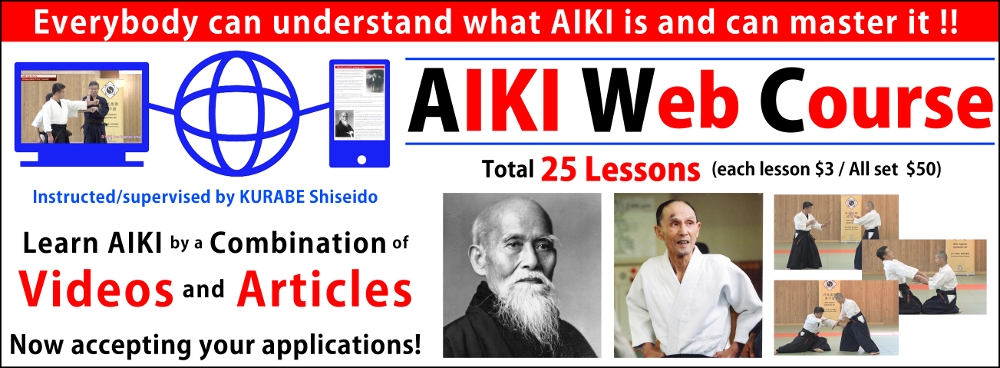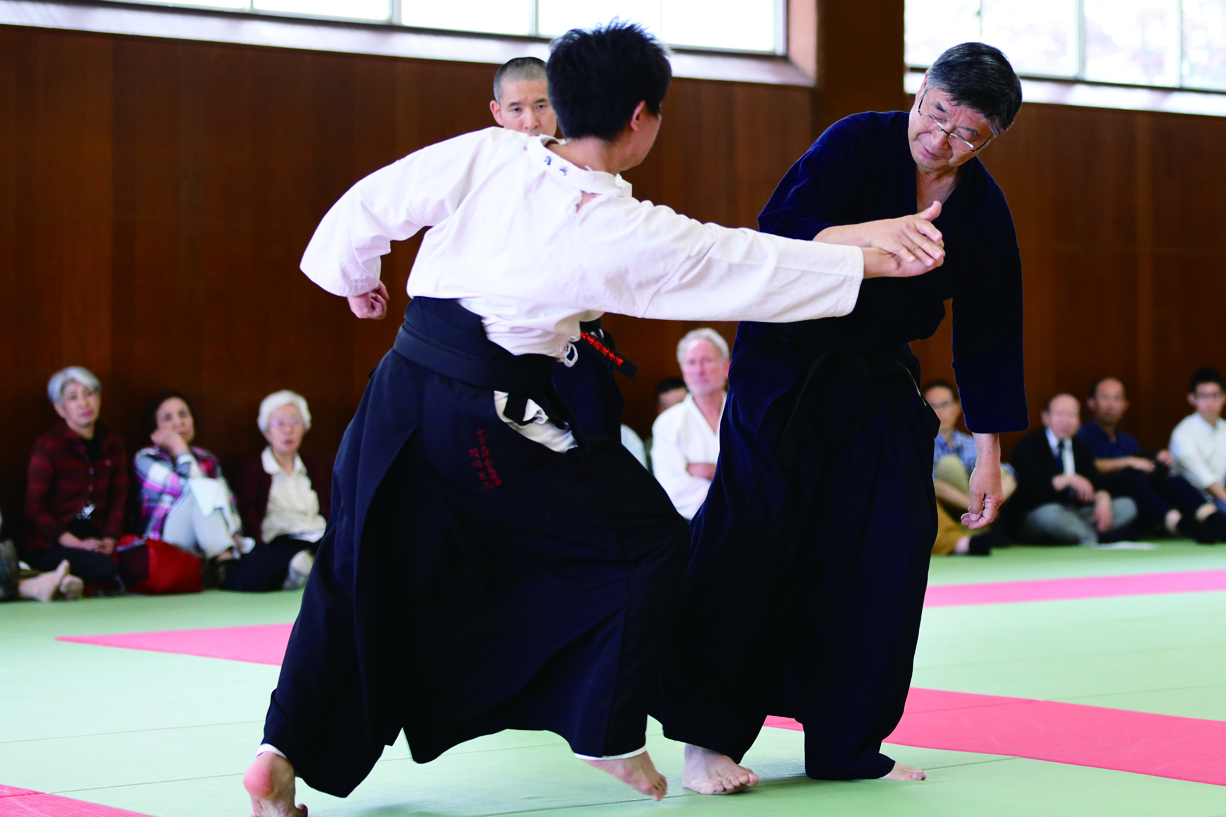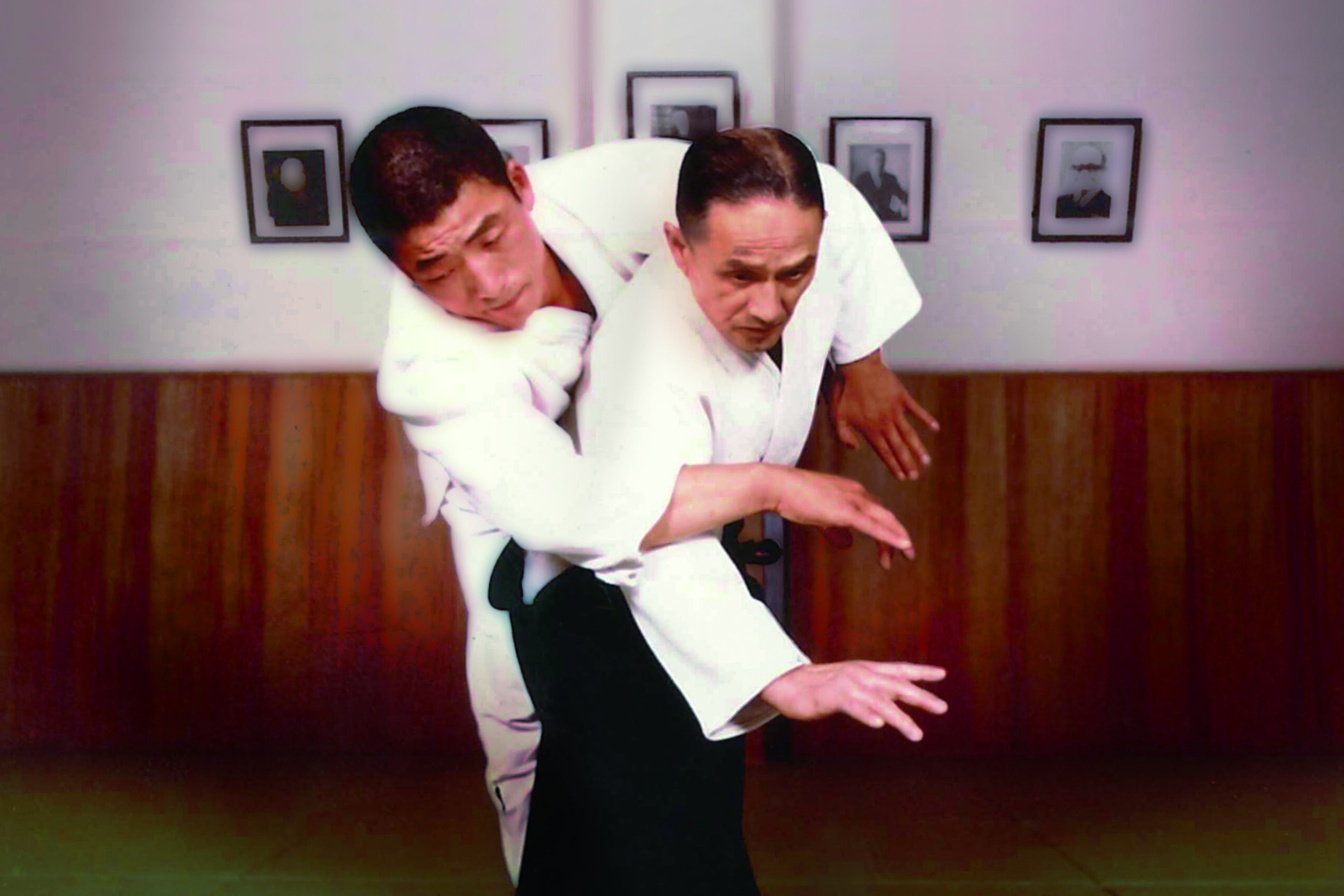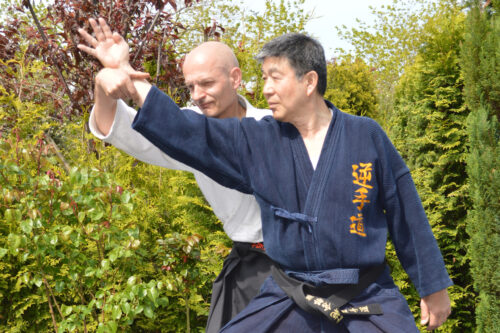» At the starting of AIKI Web Course
【AIKI Web Course Part 2】
Lesson 1 - The Explanation of Waving Method
By this method one applies force to the other in a shape of wave motion. The opponent does not know how to react to this unpredictable force and is easily collapsed.
If the applied force is predictable like a constant level pressure or a shock, he can somehow resist it.
But a wave motion starts at zero speed and it accelerates which totally unpredictable for him.
If a force in a wave motion is applied, a person does not know how to react it. As a result he had to synchronize himself to the motion to be collapsed.
Now I explain this Waving Method using the technique “Jodan Shuto Ate Kaeshi”as an example.
Jodan Shuto Ate Kaeshi

A and B stand face to face.
A…Defender
B…Attacker
a) B steps in with left leg and attacks A by left Jodan Shuto Ate.
b) A steps in with left leg and block B’s Shuto Ate with his left lower arm by Shuto Uke.
c) When A’s arm touches B’s arm, repel B’s arm by using his lower arm as a spring.
D) B has no choice but to synchronize himself to this spring motion of A’s lower arm, and is bounced backwards.
Now I explain in detail what spring motion is.
Important Point: Waving Motion, in This Case Spring Motion
1 Timing is important
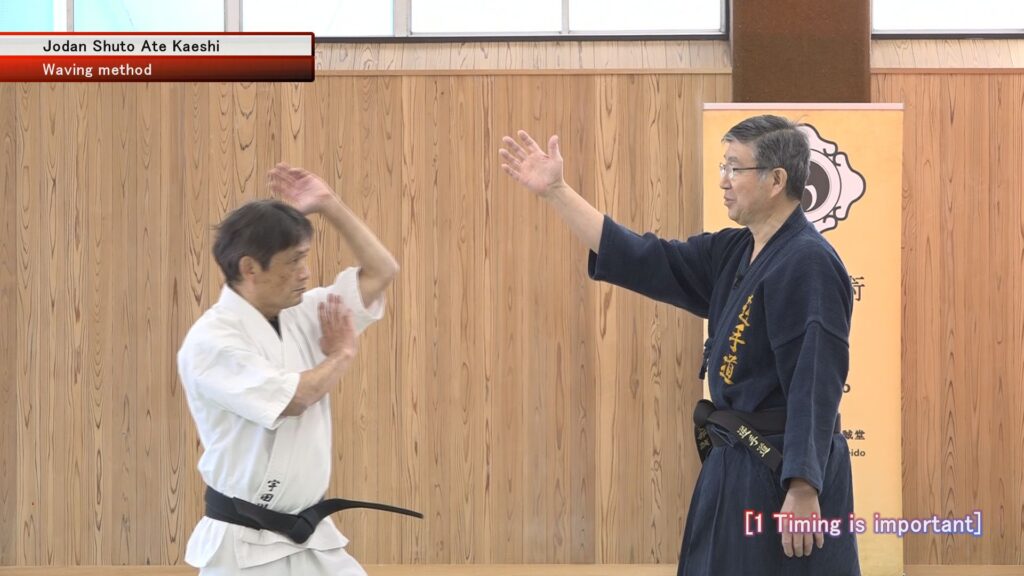
It is important in which timing you touch the opponent’s lower arm with your lower arm.
When the timing becomes late and the speed of the opponent’s lower arm becomes too high, it is impossible for you to bounce back the opponent’s arm by spring motion.
That is why the timing should be at the moment the speed of the opponent’s lower arm is still slow enough, i.e. when he raises his arm upwards.
2 Pull arm by setting elbow as fulcrum

Pull back lower arm a little with the elbow as a fulcrum after touching B’s arm.
When you make Shuto Uke, you pull back your lower arm a little to absorb the opponent’s force, i.e. Spring Motion.
By setting elbow as a fulcrum of the motion, A pulls back lower arm and bounces it.
Summary of Lesson 1
It is the important point of this chapter that how you can realize spring motion with your lower arm.
The opponent predicts that you react to his Shuto Ate by hard block. But you block it by soft wave motion which is totally out of his expectation and he gets huge confusion.
As a result he had to synchronize himself to that spring motion and is bounced backwards.
Even the opponent knows what you will do it, the result is same, because this depends on human basic characteristics.
So, this is not a miracle but just a pure psychological phenomenon.In addition, the spring motion is not just a soft block, but a [rebound motion].
Learn AIKI by a Combination of
Videos and Articles!!
» At the starting of AIKI Web Course
with Videos and Free Articles
AIKI Web Course Part 2 24 Lessons
-
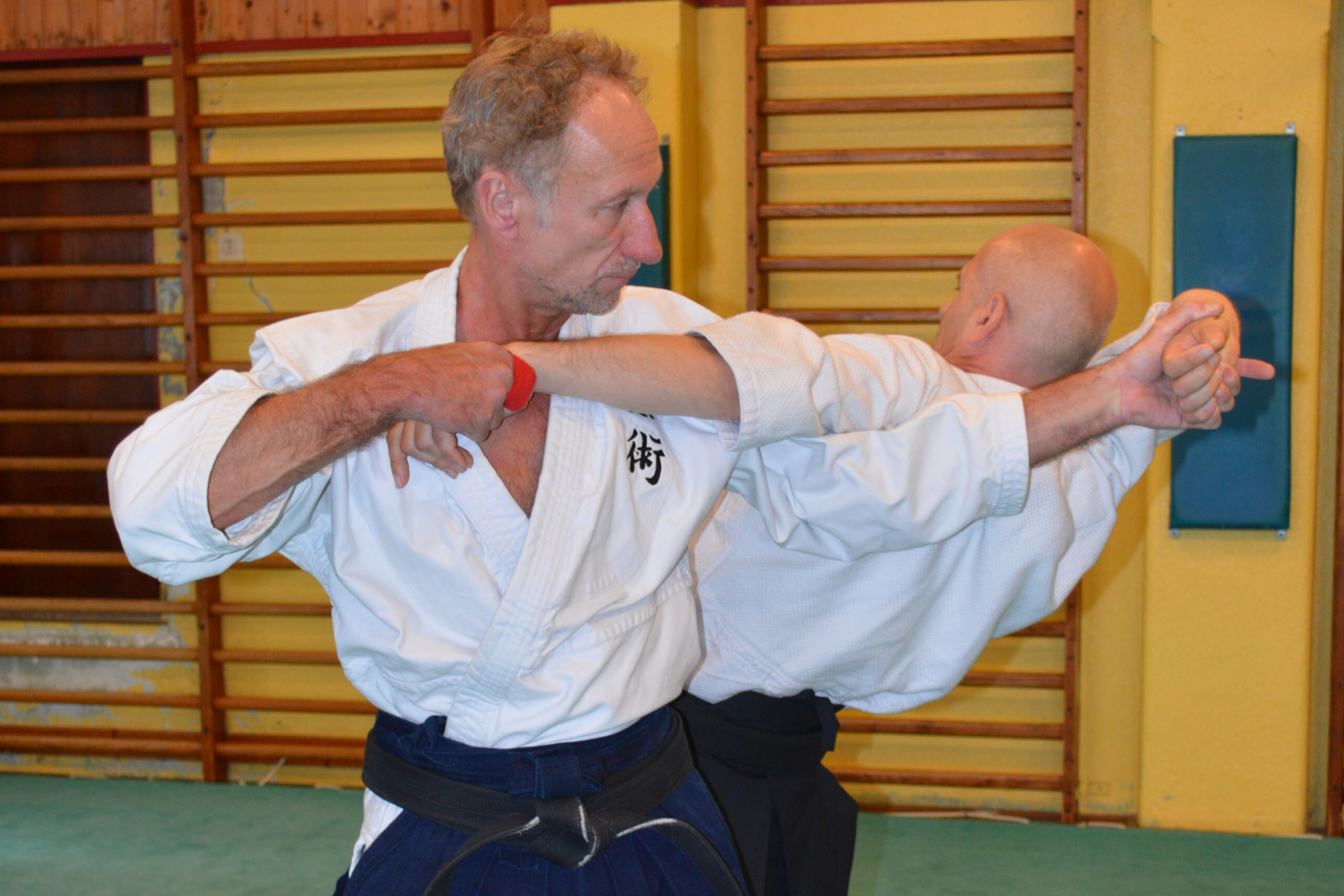
【AIKI JUJUTSU GYAKUTE-DO Series No.5】How you can learn Jujutsu properly
-
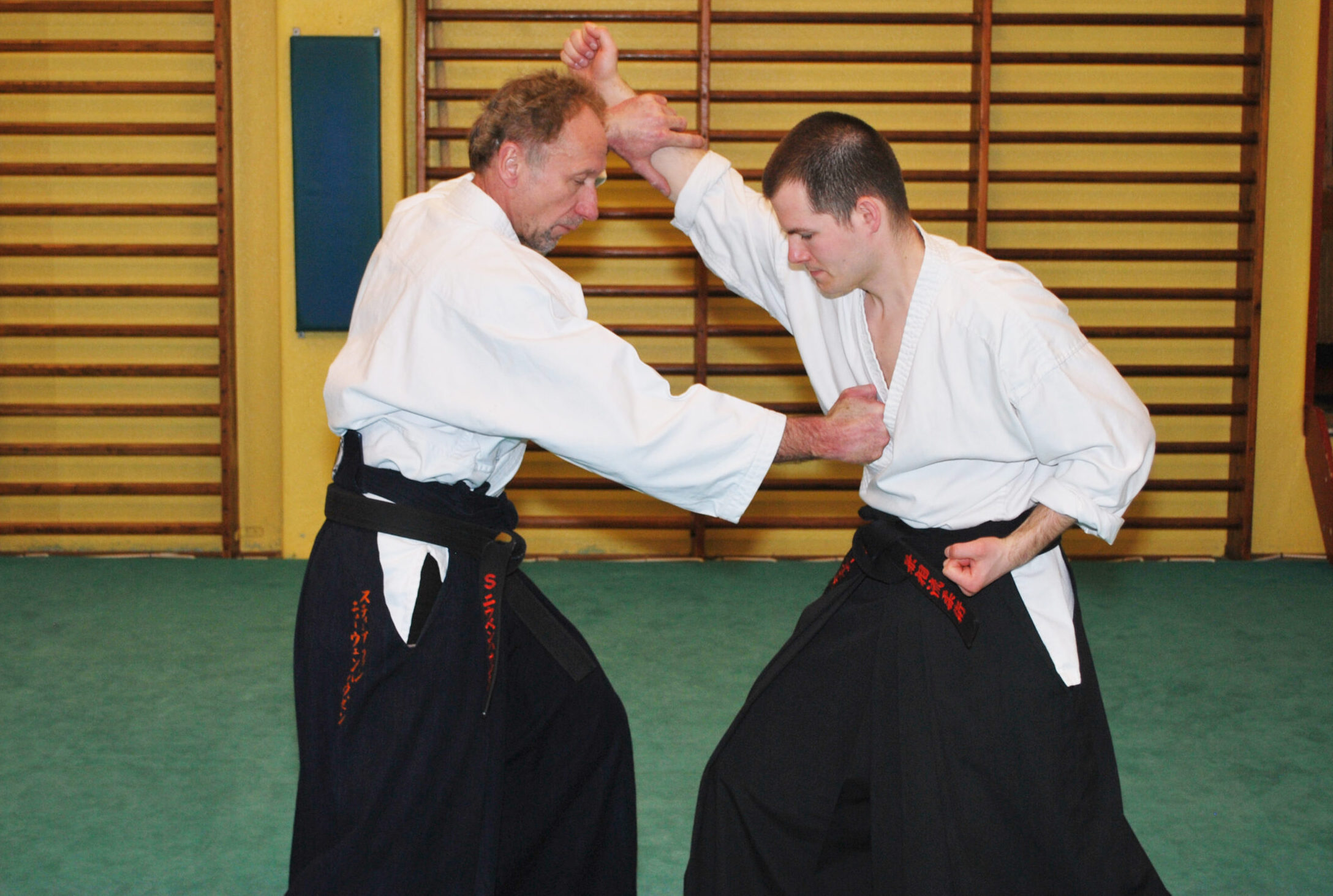
【AIKI JUJUTSU GYAKUTE-DO Series No.4】DAKEN-HO Hit and Kick KATA and AIKI
-
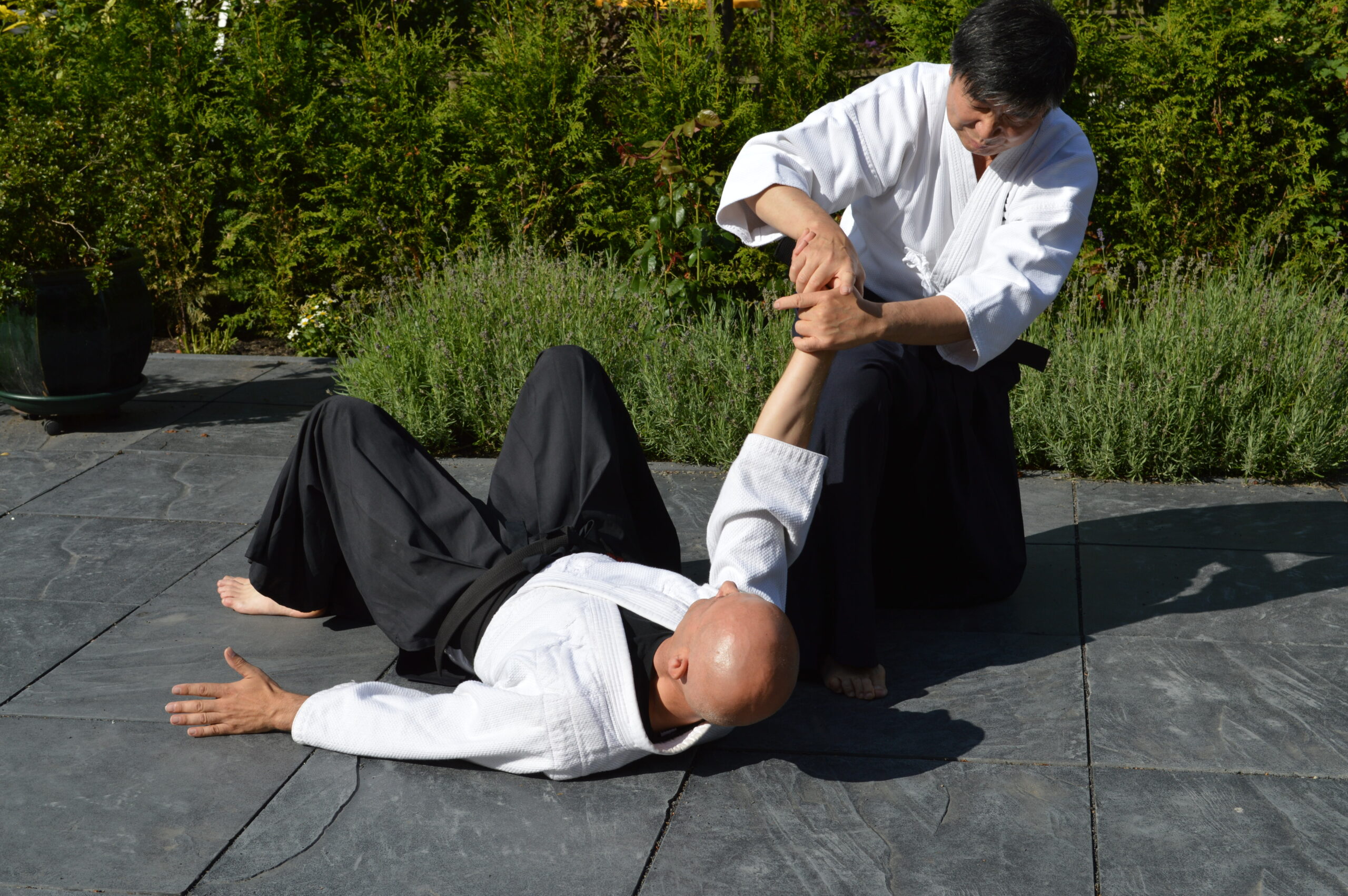
【AIKI JUJUTSU GYAKUTE-DO Series No.3】JUJUTSU WAZA, digest of FUDO
-
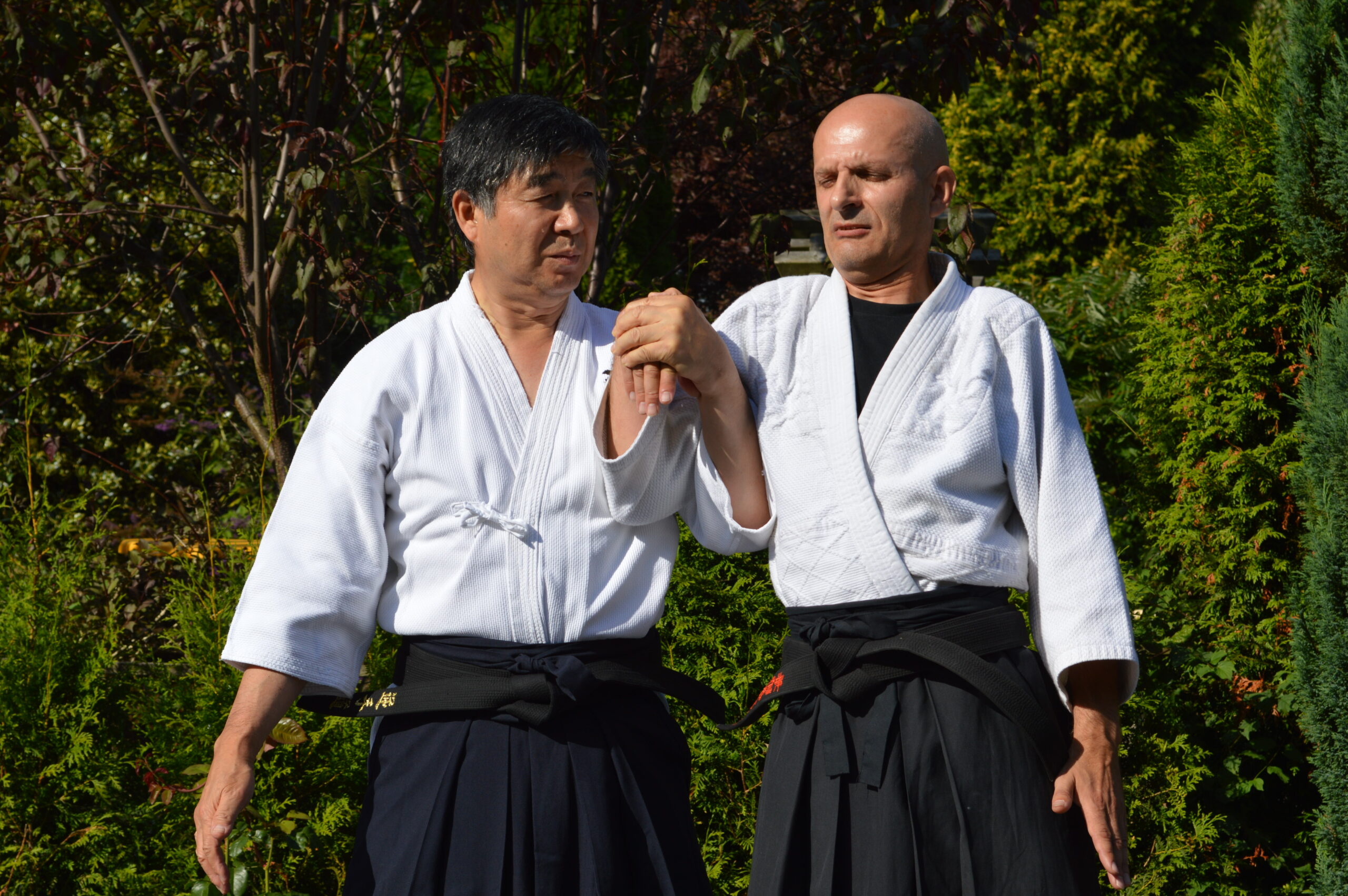
【AIKI JUJUTSU GYAKUTE-DO Series No.2】JUJUTSU WAZA, digest of NUKI, RENKO and NAGE
-

【AIKI JUJUTSU GYAKUTE-DO Series No.1】About GYAKUTE-DO and the digest of its basic techniques
-
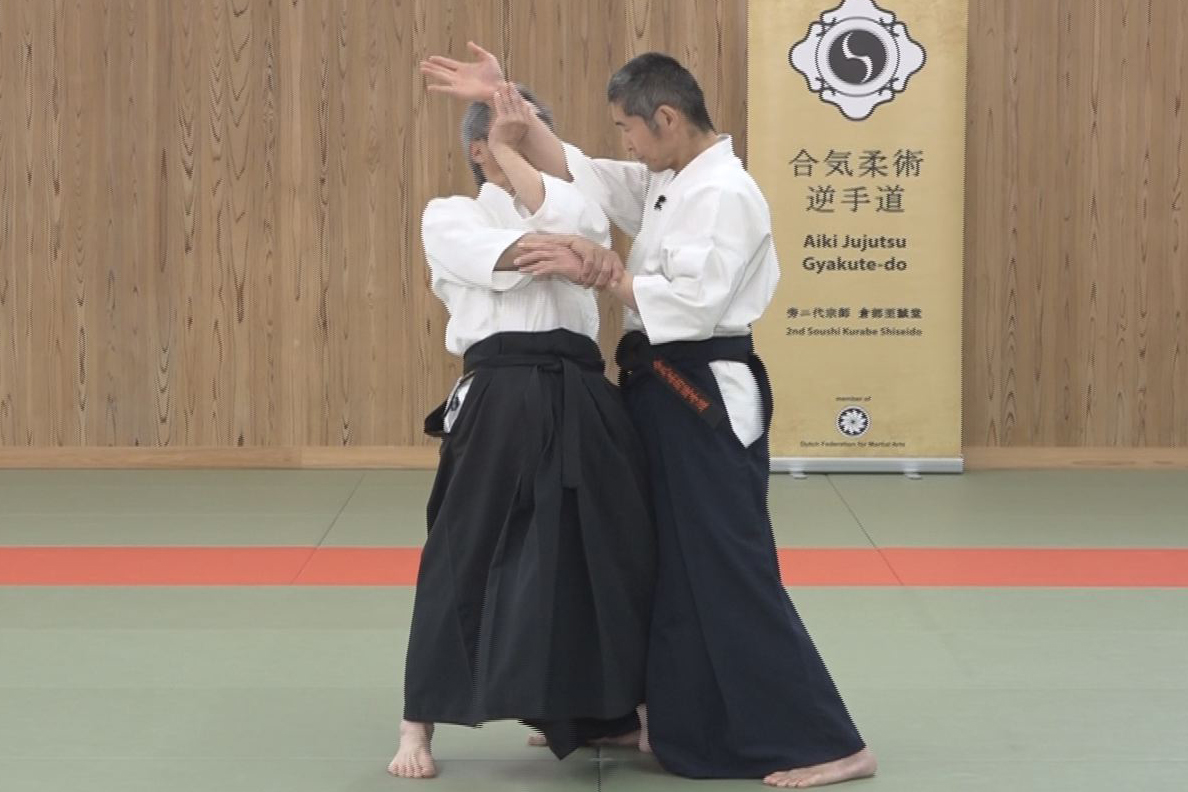
Lesson 24 With Comb. of Different Methods #2
-
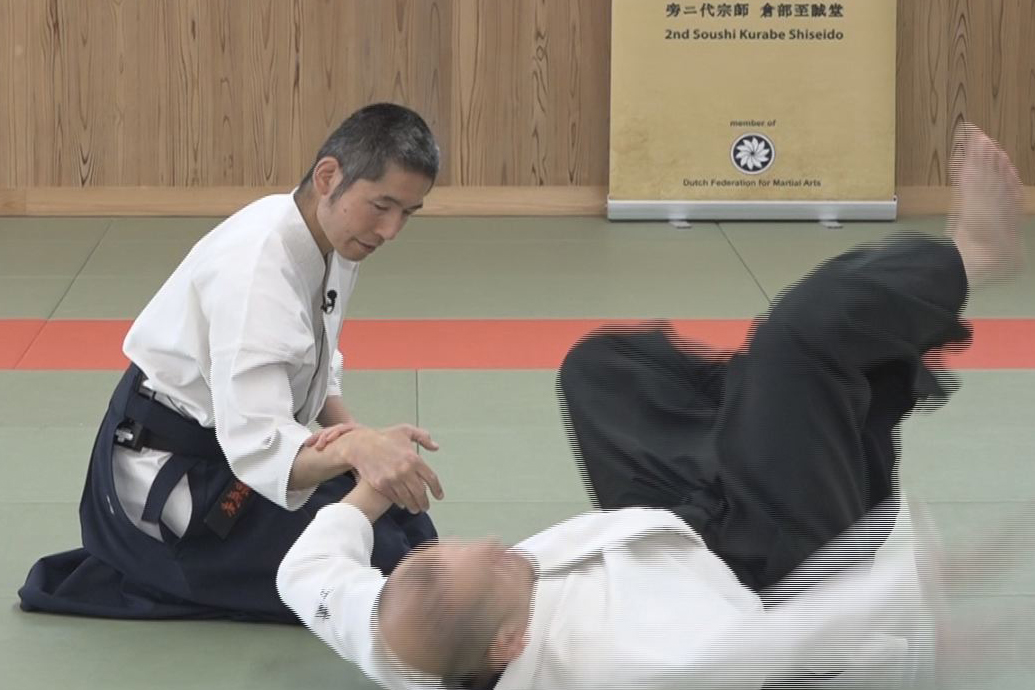
Lesson 23 With Comb. of Different Methods #1
-

Lesson 22 Advanced Tech. using F. E. method #2
-

Lesson 21 Advanced Tech. using F. E. method #1
-

Lesson 20 Advanced tech. using T. F. T. #2
-
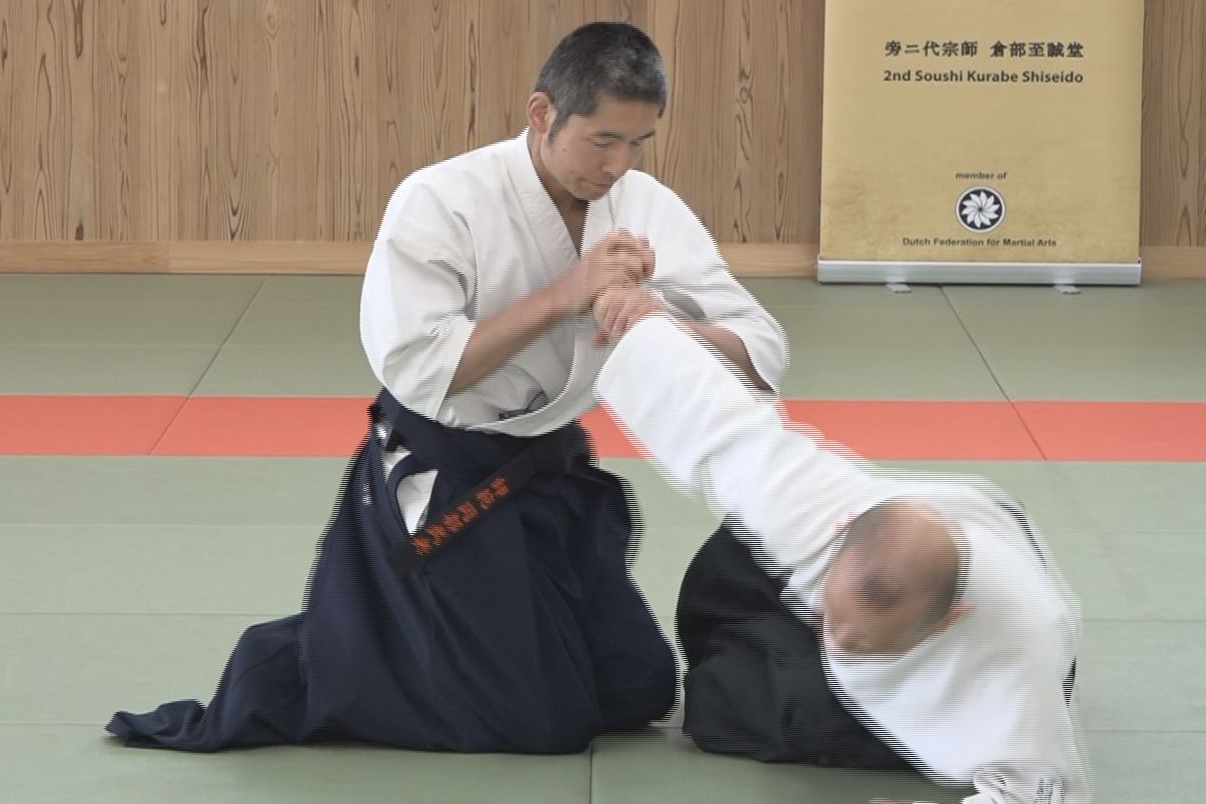
Lesson 19 Advanced tech. using T. F. T. #1
-
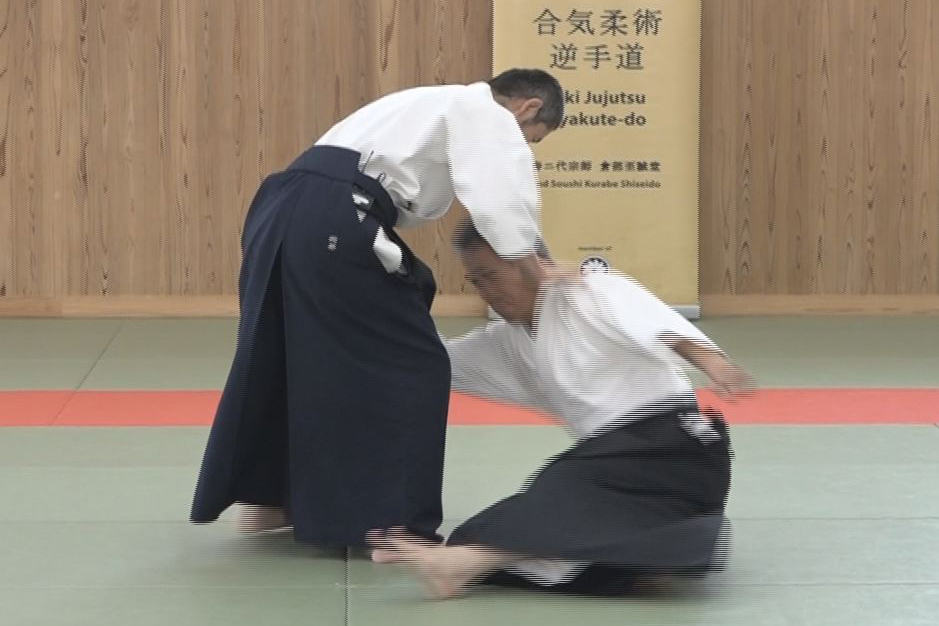
Lesson 18 Advanced tech. using AIKI Contact #2
-
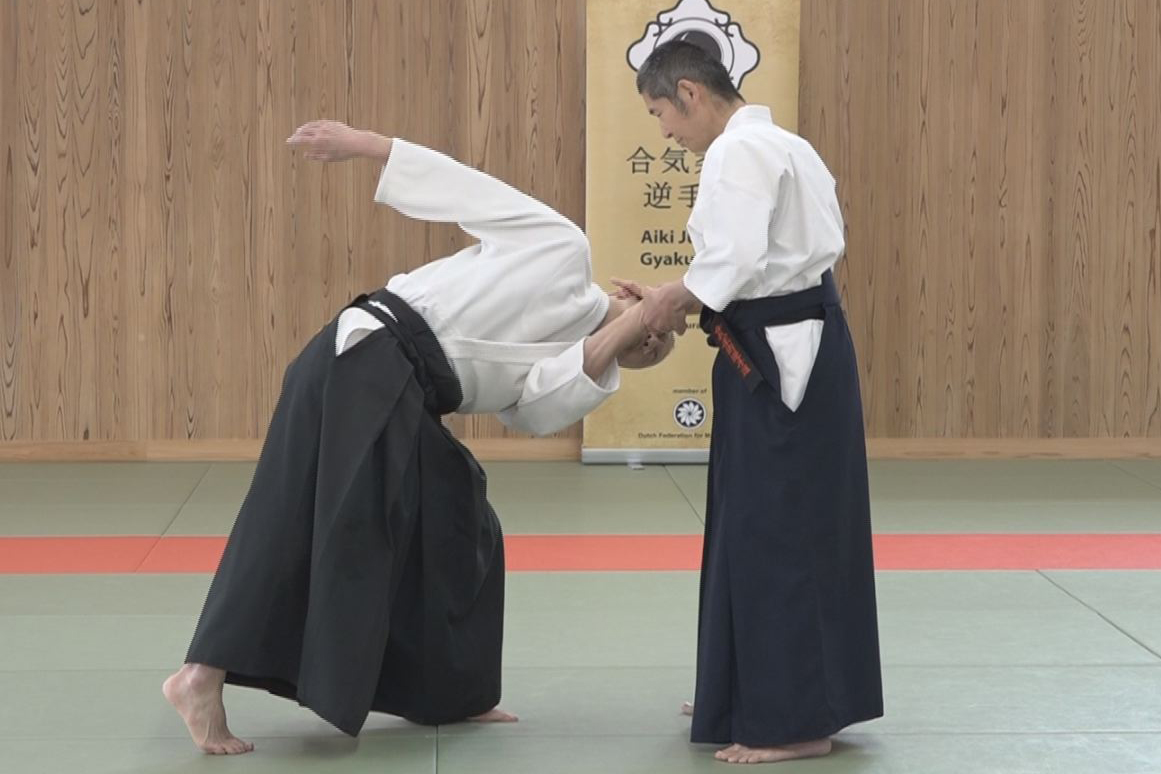
Lesson 17 Advanced tech. using AIKI Contact #1
-
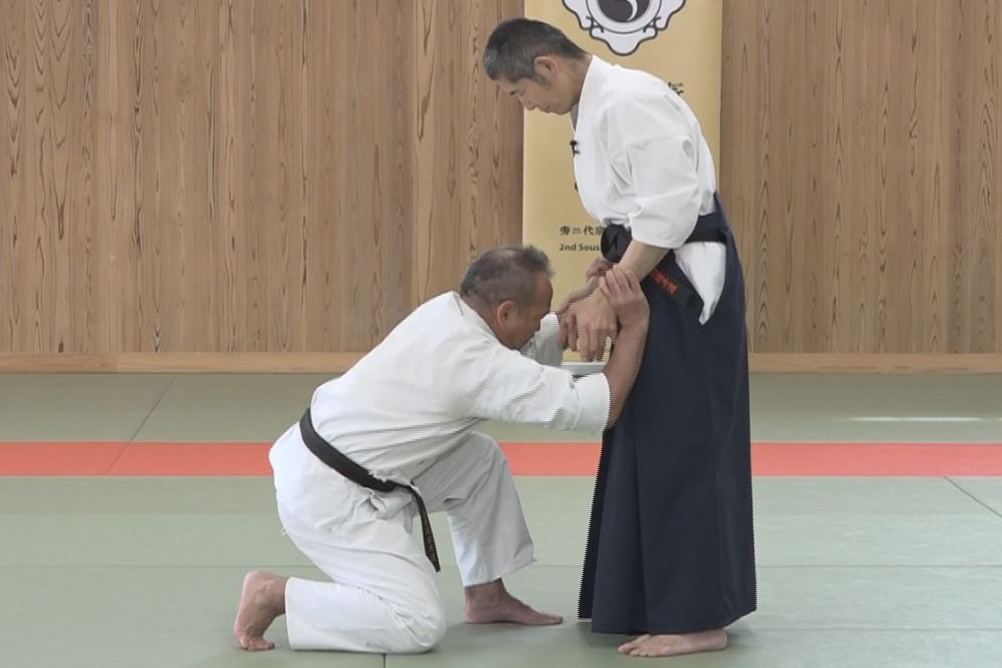
Lesson 16 Advanced tech. by Undetectable F.T. #2
-
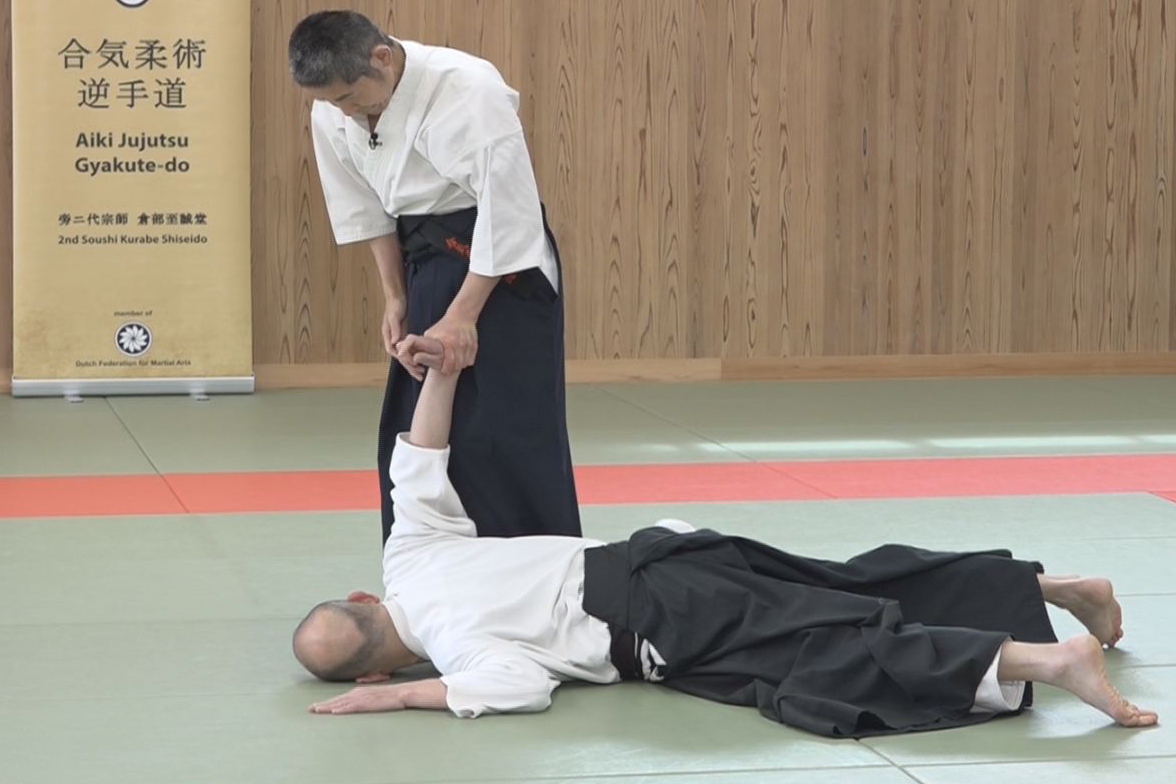
Lesson 15 - Advanced tech. by Undetectable F. T. #1
-

Lesson 14 - Advanced tech. by the Waving method #2
-
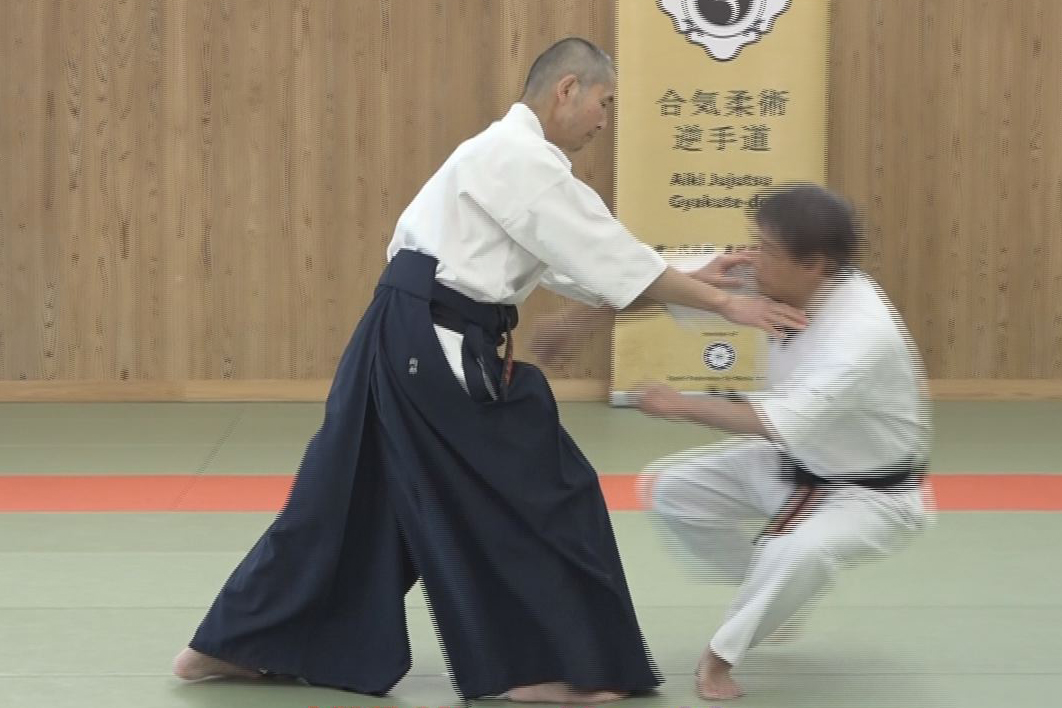
Lesson 13 - Advanced tech. by the Waving method #1
-
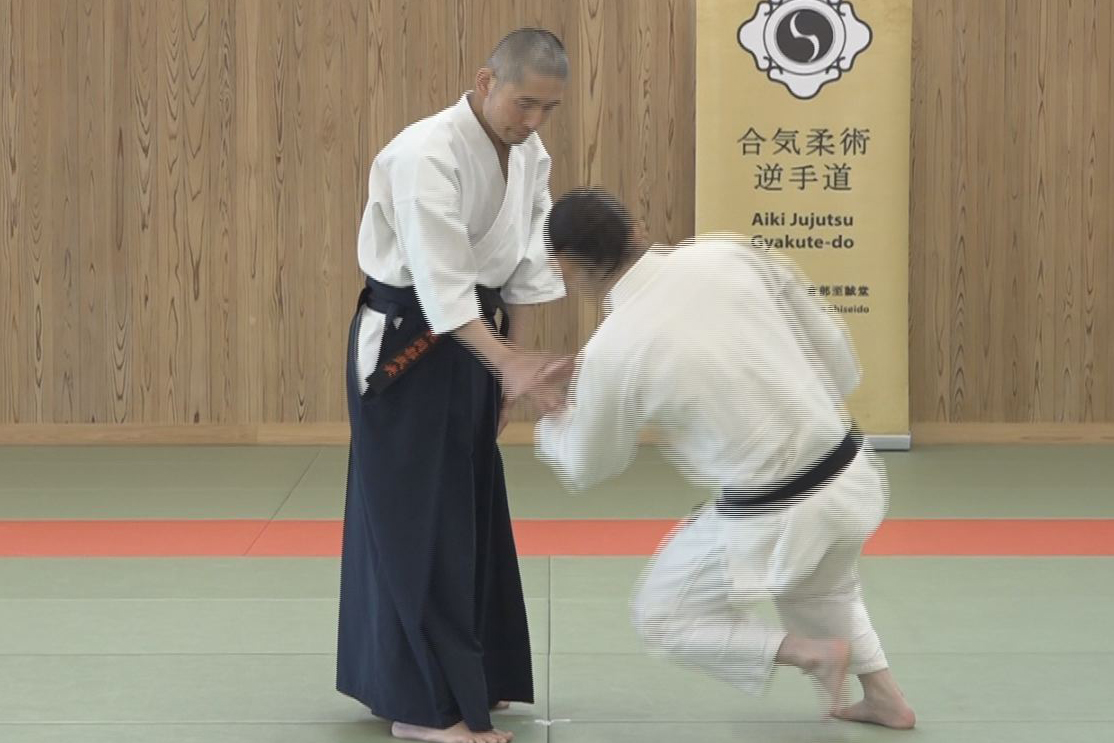
Lesson 12 - Gyaku-te by not Using Force nor AIKI
-
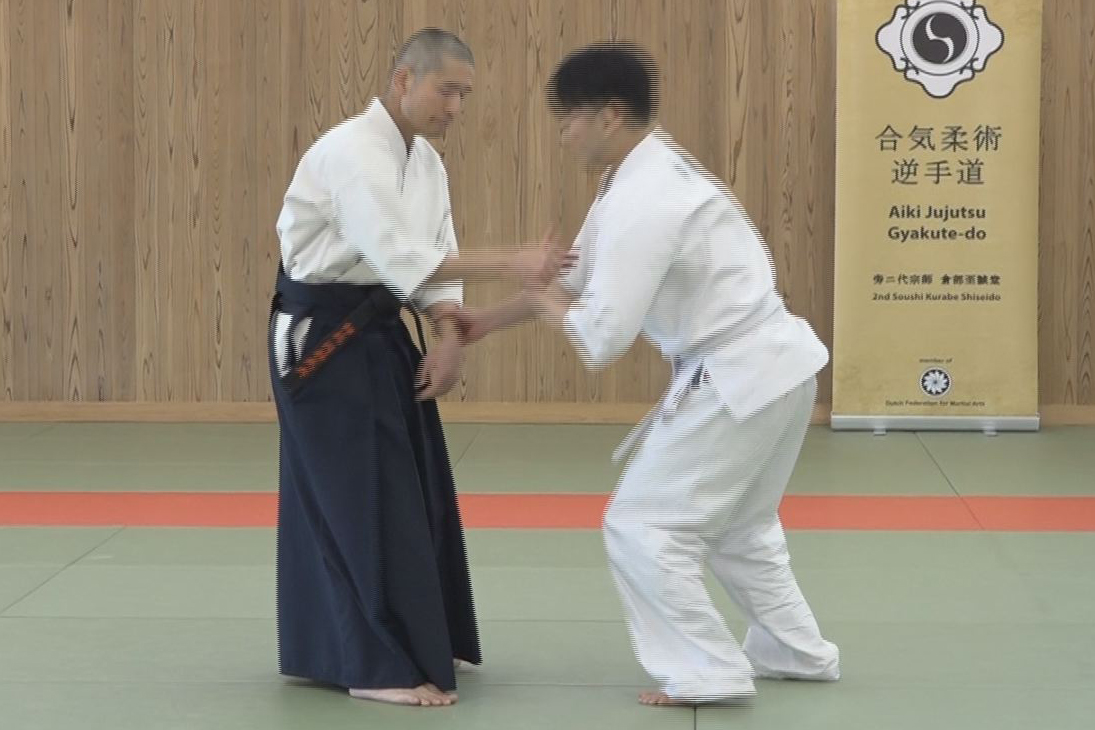
Lesson 11 - Gyaku-te Realized by the AIKI Method
-
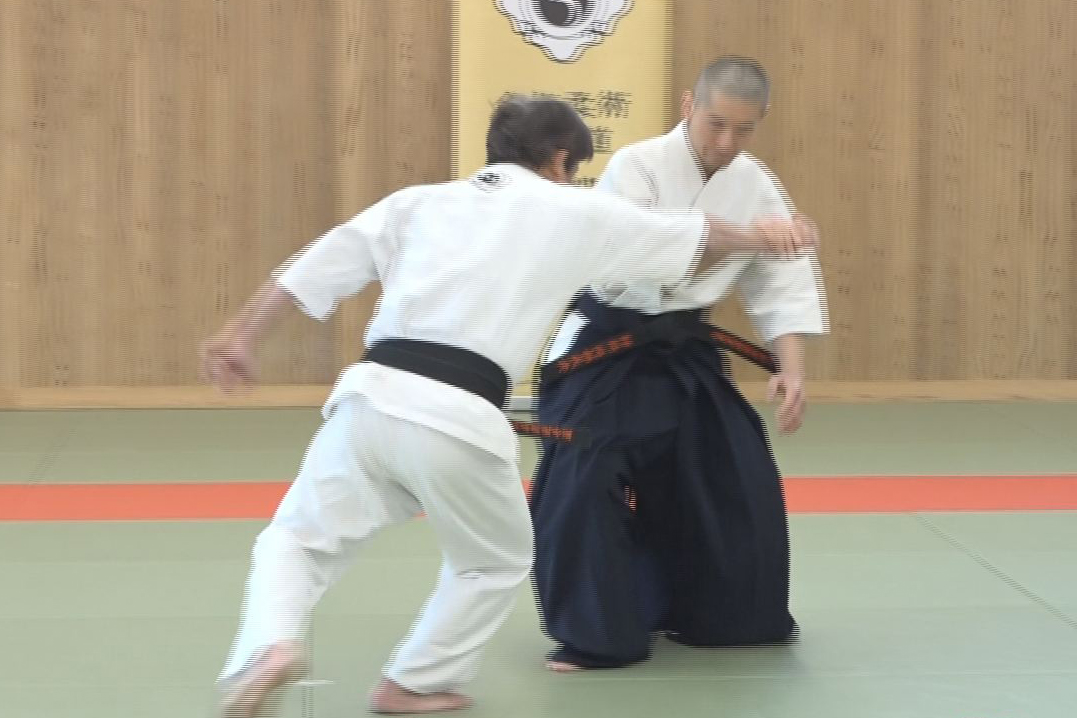
Lesson 10 - Application of Force Equilibrium method
-
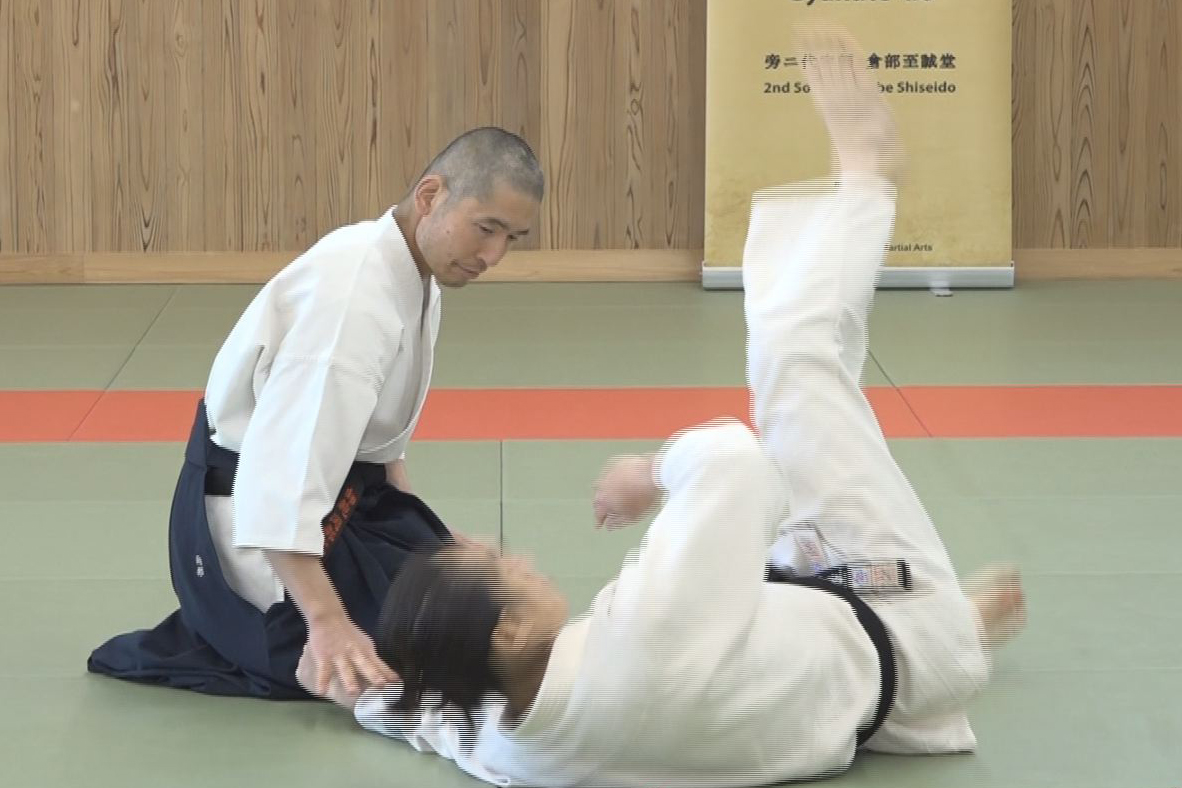
Lesson 9 - Force Equilibrium
-
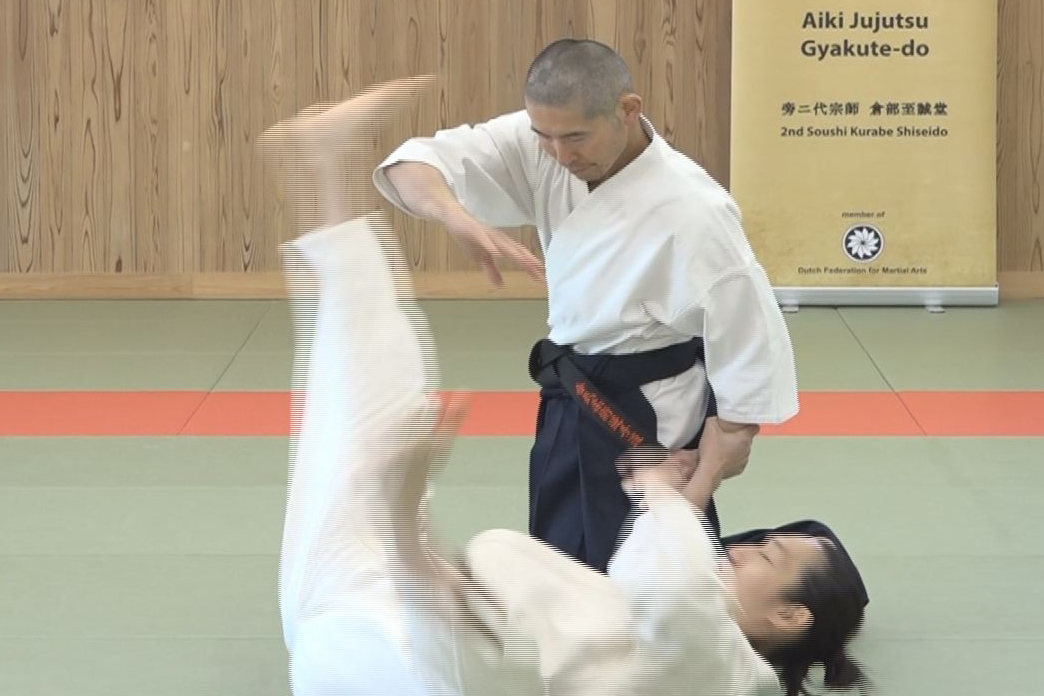
Lesson 8 - Application of Targeted Force Transfer
-
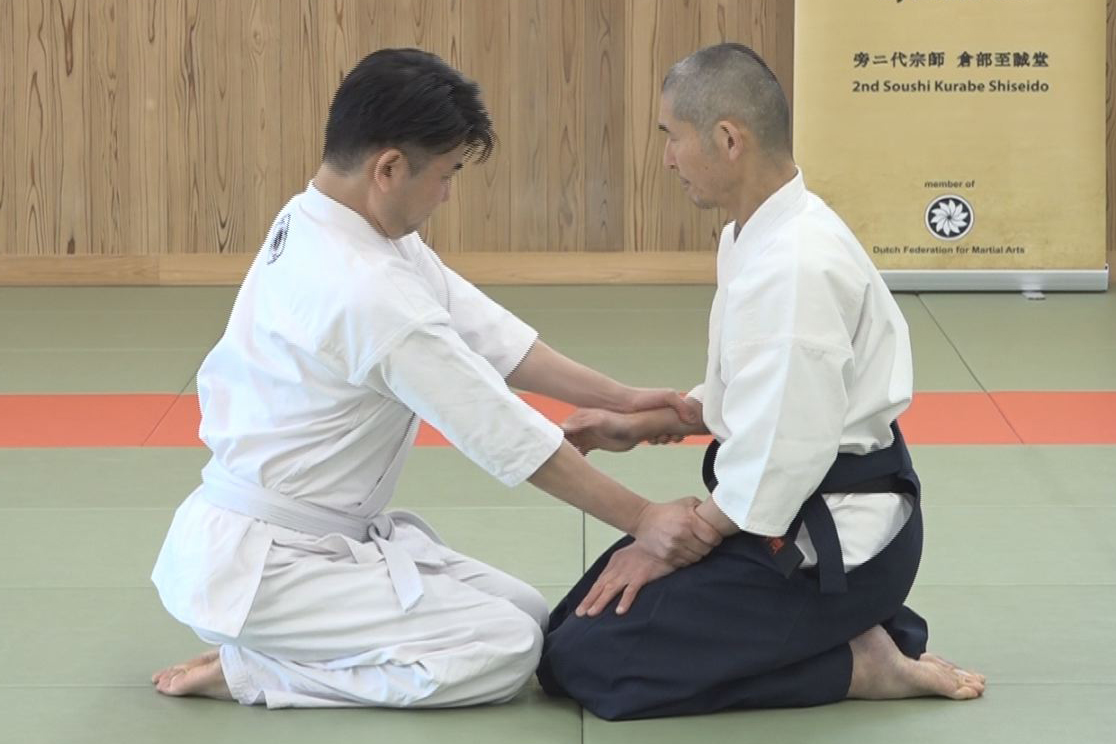
Lesson 7 - Targeted Force Transfer
-

Lesson 6 - Application of AIKI Connection
-
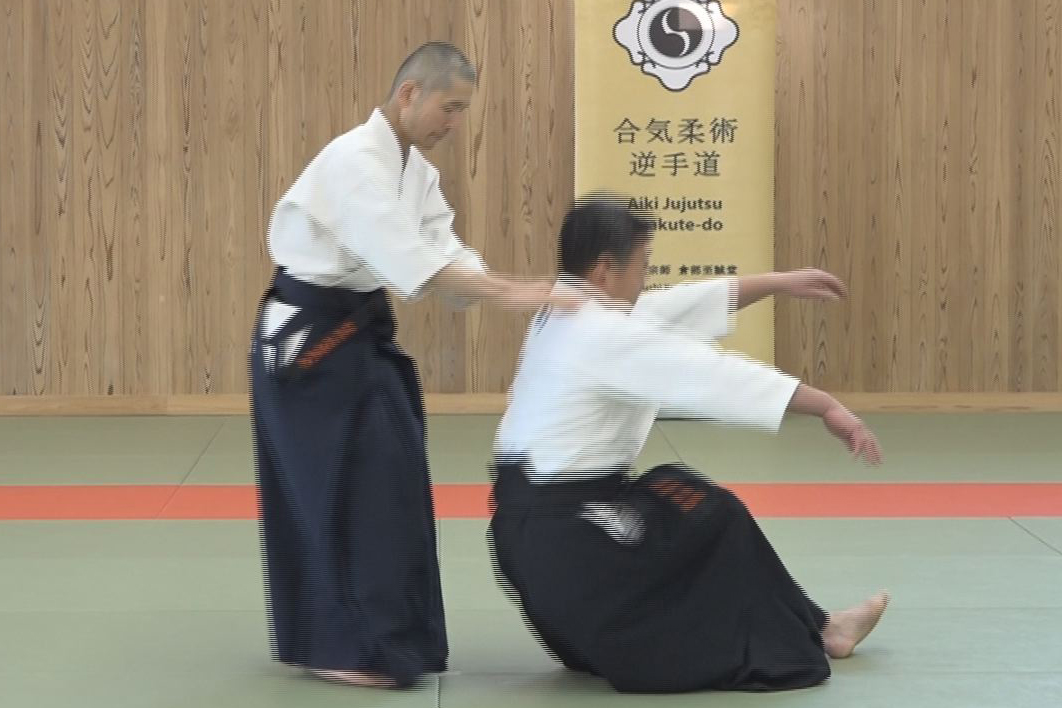
Lesson 5 - AIKI Connection
-

Lesson 4 - Application of Nondetectable Force Transfer
-
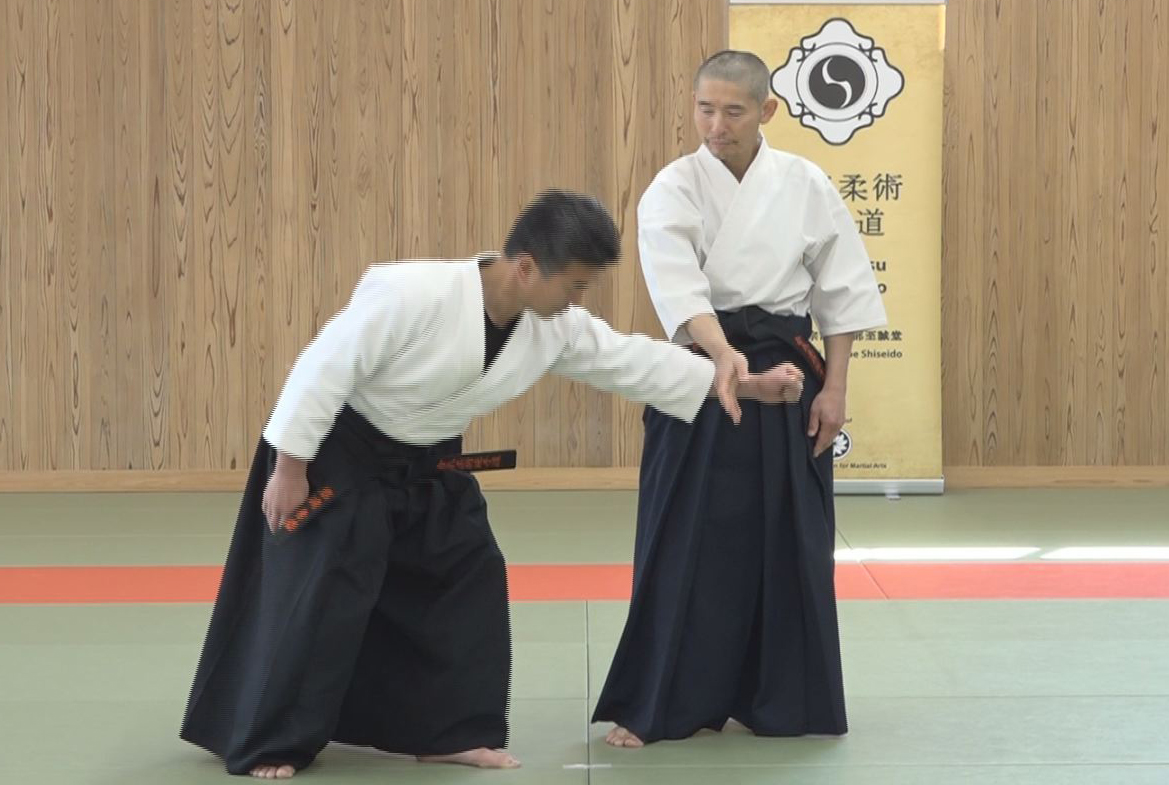
Lesson 3 - Explanation of Undetectable Force Transfer
-
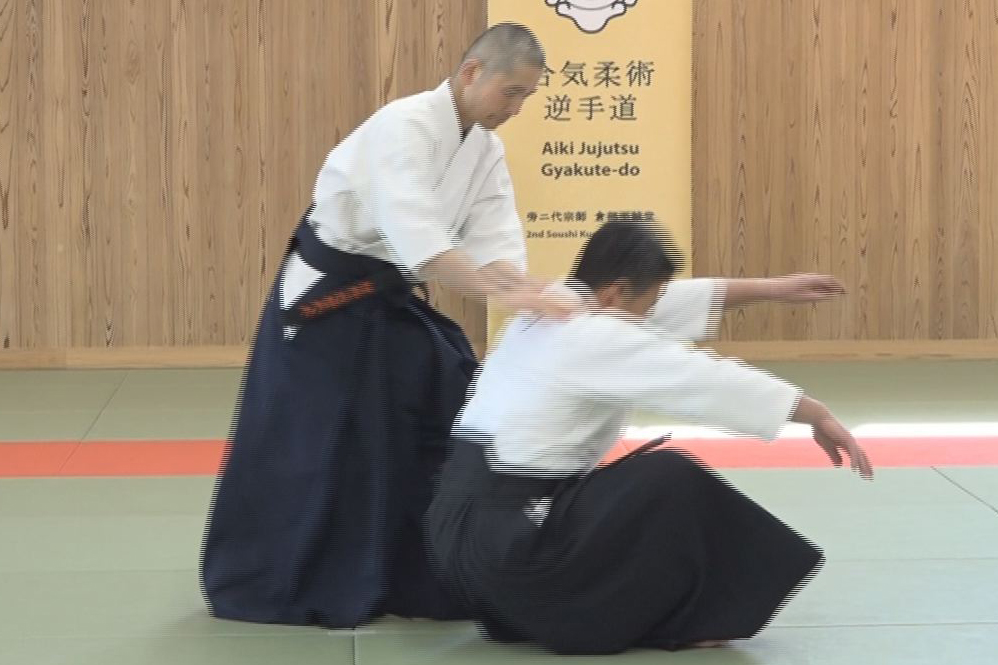
Lesson 2 - Application of Waving Method
-

Lesson 1 - The Explanation of Waving Method
-
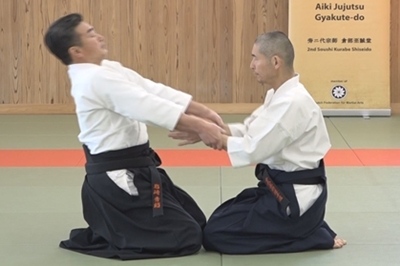
Introduction with video
and Knowledge of AIKI
AIKI Web Course Part 1 6 Lessons
Articles
-
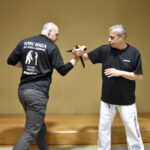 New!2025/07/14
Integrated Jiujutsu and Evolve Krav Maga: Japanese Seminar Experience
New!2025/07/14
Integrated Jiujutsu and Evolve Krav Maga: Japanese Seminar Experience
-
 2025/06/17
Eine Empfehlung für Feldforschung! Notizen aus der Forschung und Beobachtung zur Karate-Geschichte
2025/06/17
Eine Empfehlung für Feldforschung! Notizen aus der Forschung und Beobachtung zur Karate-Geschichte
-
 2025/06/17
A Recommendation for Fieldwork! Notes from Karate History Research and Observations
2025/06/17
A Recommendation for Fieldwork! Notes from Karate History Research and Observations
-
 2025/06/13
【Exploring the spirit of the Ryukyu】Special edition (HIDEN July 2025)「Homage to CHINEN SENSEI」
2025/06/13
【Exploring the spirit of the Ryukyu】Special edition (HIDEN July 2025)「Homage to CHINEN SENSEI」
-
 2025/06/13
【L’esprit des Ryukyu】Édition spéciale (HIDEN Juillet 2025)「HOMMAGE À CHINEN SENSEI」
2025/06/13
【L’esprit des Ryukyu】Édition spéciale (HIDEN Juillet 2025)「HOMMAGE À CHINEN SENSEI」
Free Videos
-
 New!2025/07/15
Tamotsu Miyahira talks about Wushu
New!2025/07/15
Tamotsu Miyahira talks about Wushu
-
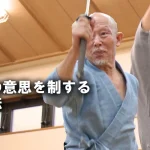 New!2025/07/13
Methods for refining the body, such as manipulating the sternum by Hino Akira.
New!2025/07/13
Methods for refining the body, such as manipulating the sternum by Hino Akira.
-
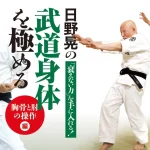 2025/07/11
Akira HinoMastery of Movement: Sternum and Elbow in Action
2025/07/11
Akira HinoMastery of Movement: Sternum and Elbow in Action
-
 2025/07/09
The 43rd Nippon Kobudo Demonstrations in Asakusa 2025
2025/07/09
The 43rd Nippon Kobudo Demonstrations in Asakusa 2025
-
 2025/07/08
The “axis” that dramatically transforms every movement 2
2025/07/08
The “axis” that dramatically transforms every movement 2


